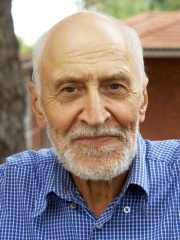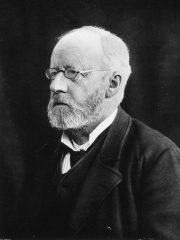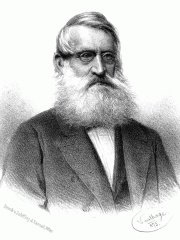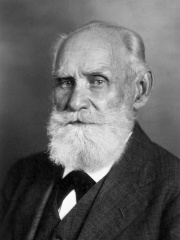
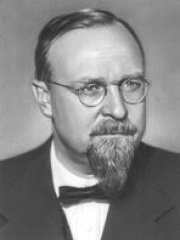
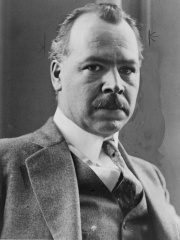
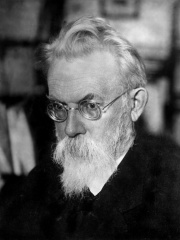
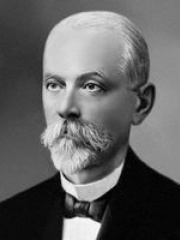
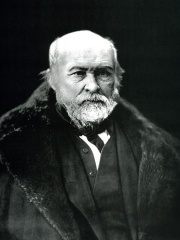
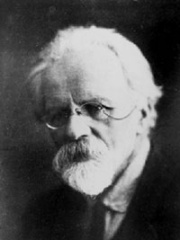
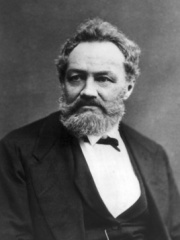
The Most Famous
BIOLOGISTS from Russia
This page contains a list of the greatest Russian Biologists. The pantheon dataset contains 1,097 Biologists, 26 of which were born in Russia. This makes Russia the birth place of the 7th most number of Biologists behind Sweden, and Switzerland.
Top 10
The following people are considered by Pantheon to be the top 10 most legendary Russian Biologists of all time. This list of famous Russian Biologists is sorted by HPI (Historical Popularity Index), a metric that aggregates information on a biography's online popularity. Visit the rankings page to view the entire list of Russian Biologists.

1. Ivan Pavlov (1849 - 1936)
With an HPI of 83.05, Ivan Pavlov is the most famous Russian Biologist. His biography has been translated into 99 different languages on wikipedia.
Ivan Petrovich Pavlov (Russian: Иван Петрович Павлов, IPA: [ɪˈvan pʲɪˈtrovʲɪtɕ ˈpavləf] ; 26 September [O.S. 14 September] 1849 – 27 February 1936) was a Russian and Soviet experimental neurologist and physiologist known for his discovery of classical conditioning through his experiments with dogs. Pavlov also conducted significant research on the physiology of digestion, for which he was awarded the Nobel Prize in Physiology or Medicine in 1904.

2. Alexander Oparin (1894 - 1980)
With an HPI of 72.06, Alexander Oparin is the 2nd most famous Russian Biologist. His biography has been translated into 57 different languages.
Alexander Ivanovich Oparin (Russian: Александр Иванович Опарин; 2 March [O.S. 18 February] 1894 – 21 April 1980) was a Soviet biochemist notable for his theories about the origin of life and for his book The Origin of Life. He also studied the biochemistry of material processing by plants and enzyme reactions in plant cells. He showed that many food production processes were based on biocatalysis and developed the foundations for industrial biochemistry in the USSR.

3. Nikolai Vavilov (1887 - 1943)
With an HPI of 70.72, Nikolai Vavilov is the 3rd most famous Russian Biologist. His biography has been translated into 52 different languages.
Nikolai Ivanovich Vavilov (Russian: Никола́й Ива́нович Вави́лов, IPA: [nʲɪkɐˈlaj ɪˈvanəvʲɪtɕ vɐˈvʲiləf] ; 25 November [O.S. 13 November] 1887 – 26 January 1943) was a Russian and Soviet agronomist, botanist and geneticist who identified the centers of origin of cultivated plants. His research focused on improvement of wheat, maize and other cereal crops. Vavilov became the youngest member of the Academy of Sciences of the Soviet Union. He was a member of the USSR Central Executive Committee, a recipient of the Lenin Prize, and president of All-Union Geographical Society. He was a fellow of the Royal Society and of the Royal Society of Edinburgh. Vavilov's work was criticized by Trofim Lysenko, whose anti-Mendelian concepts of plant biology had won favor with Joseph Stalin. As a result, Vavilov was arrested and subsequently sentenced to death in July 1941. Although his sentence was commuted to twenty years' imprisonment, he died in prison in 1943. In 1955, his death sentence was retroactively pardoned under Nikita Khrushchev. By the late 1950s, his reputation was publicly rehabilitated, and he began to be hailed as a hero of Soviet science.

4. Vladimir Vernadsky (1863 - 1945)
With an HPI of 70.07, Vladimir Vernadsky is the 4th most famous Russian Biologist. His biography has been translated into 61 different languages.
Vladimir Ivanovich Vernadsky (Russian: Владимир Иванович Вернадский), also spelt Volodymyr Ivanovych Vernadsky (Ukrainian: Володимир Іванович Вернадський; 12 March [O.S. 28 February] 1863 – 6 January 1945), was a Russian, Ukrainian, and Soviet mineralogist and geochemist who is considered one of the founders of geochemistry, biogeochemistry, and radiogeology. He was one of the founders and the first president of the Ukrainian Academy of Sciences (now National Academy of Sciences of Ukraine). Vladimir Vernadsky is most noted for his 1926 book The Biosphere in which he inadvertently worked to popularize Eduard Suess's 1875 term biosphere, by hypothesizing that life is the geological force that shapes the earth. In 1943 he was awarded the Stalin Prize. Vernadsky's portrait is depicted on the Ukrainian ₴1,000 hryvnia banknote.
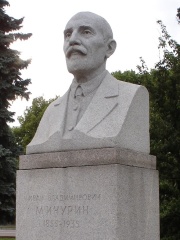
5. Ivan Vladimirovich Michurin (1855 - 1935)
With an HPI of 69.01, Ivan Vladimirovich Michurin is the 5th most famous Russian Biologist. His biography has been translated into 42 different languages.
Ivan Vladimirovich Michurin (Russian: Иван Владимирович Мичурин; October 27 [O.S. October 15] 1855 – June 7, 1935) was a Russian practitioner of selection to produce new types of crop plants, Honorable Member of the Soviet Academy of Sciences, and academician of the Lenin All-Union Academy of Agriculture. Throughout all his life, Michurin worked to create new sorts of fruit plants. He introduced over 300 new varieties. He was awarded the Order of Lenin and Order of the Red Banner of Labour for his achievements. The town of Michurinsk is named in his honor, as was the Bulgarian town of Tsarevo between 1950 and 1991.

6. Dmitri Ivanovsky (1864 - 1920)
With an HPI of 67.62, Dmitri Ivanovsky is the 6th most famous Russian Biologist. His biography has been translated into 36 different languages.
Dmitri Iosifovich Ivanovsky (alternative spelling Dmitrii or Dmitry Iwanowski; Russian: Дми́трий Ио́сифович Ивано́вский; 28 October 1864 – 20 June 1920) was a Russian botanist, the co-discoverer of viruses (1892), and one of the founders of virology.

7. Nikolay Pirogov (1810 - 1881)
With an HPI of 66.49, Nikolay Pirogov is the 7th most famous Russian Biologist. His biography has been translated into 45 different languages.
Nikolay Ivanovich Pirogov (Russian: Никола́й Ива́нович Пирого́в; 25 November [O.S. 13 November] 1810 – 5 December [O.S. 23 November] 1881) was a Russian scientist, medical doctor, pedagogue, public figure, and corresponding member of the Russian Academy of Sciences (1847), one of the most widely recognized Russian physicians. Considered to be the founder of field surgery, he was the first surgeon to use anaesthesia in a field operation (1847) and one of the first surgeons in Europe to use ether as an anaesthetic. He is credited with the invention of various kinds of surgical operations and developing his own technique of using plaster casts to treat fractured bones.

8. Ilya Ivanovich Ivanov (1870 - 1932)
With an HPI of 66.26, Ilya Ivanovich Ivanov is the 8th most famous Russian Biologist. His biography has been translated into 19 different languages.
Ilya Ivanovich Ivanov (Russian: Илья́ Ива́нович Ивано́в, August 1 [O.S. July 20] 1870 – March 20, 1932) was a Russian and Soviet biologist who specialized in the field of artificial insemination and the interspecific hybridization of animals. He is famous for his controversial attempts to create a human–ape hybrid by inseminating three female chimpanzees with human sperm.

9. Alexander von Middendorff (1815 - 1894)
With an HPI of 64.57, Alexander von Middendorff is the 9th most famous Russian Biologist. His biography has been translated into 29 different languages.
Alexander Theodor von Middendorff (Russian: Алекса́ндр Фёдорович Ми́ддендорф, romanized: Aleksandr Fyodorovich Middendorf; 18 August 1815 – 24 January 1894) was a Russian zoologist and explorer of Baltic German and Estonian extraction. He was known for his expedition in 1843–45 to the extreme north and east of Siberia, describing the effects of permafrost on the spread of animals and plants.
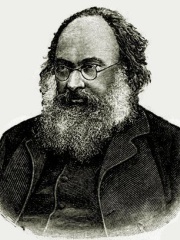
10. Nikolai Severtzov (1827 - 1885)
With an HPI of 62.38, Nikolai Severtzov is the 10th most famous Russian Biologist. His biography has been translated into 29 different languages.
Nikolai Alekseyevich Severtsov (Russian: Николай Алексеевич Северцов; 5 November 1827 – 7 February 1885) was a Russian explorer and naturalist. He was among the early promoters of Darwinian ideas in Russia.
People
Pantheon has 26 people classified as Russian biologists born between 1740 and 1937. Of these 26, 1 (3.85%) of them are still alive today. The most famous living Russian biologists include Nikolay Drozdov. The most famous deceased Russian biologists include Ivan Pavlov, Alexander Oparin, and Nikolai Vavilov.
Living Russian Biologists
Go to all RankingsDeceased Russian Biologists
Go to all RankingsIvan Pavlov
1849 - 1936
HPI: 83.05
Alexander Oparin
1894 - 1980
HPI: 72.06
Nikolai Vavilov
1887 - 1943
HPI: 70.72
Vladimir Vernadsky
1863 - 1945
HPI: 70.07
Ivan Vladimirovich Michurin
1855 - 1935
HPI: 69.01
Dmitri Ivanovsky
1864 - 1920
HPI: 67.62
Nikolay Pirogov
1810 - 1881
HPI: 66.49
Ilya Ivanovich Ivanov
1870 - 1932
HPI: 66.26
Alexander von Middendorff
1815 - 1894
HPI: 64.57
Nikolai Severtzov
1827 - 1885
HPI: 62.38
Edwin Klebs
1834 - 1913
HPI: 62.10
Philipp Johann Ferdinand Schur
1799 - 1878
HPI: 60.72
Overlapping Lives
Which Biologists were alive at the same time? This visualization shows the lifespans of the 25 most globally memorable Biologists since 1700.

